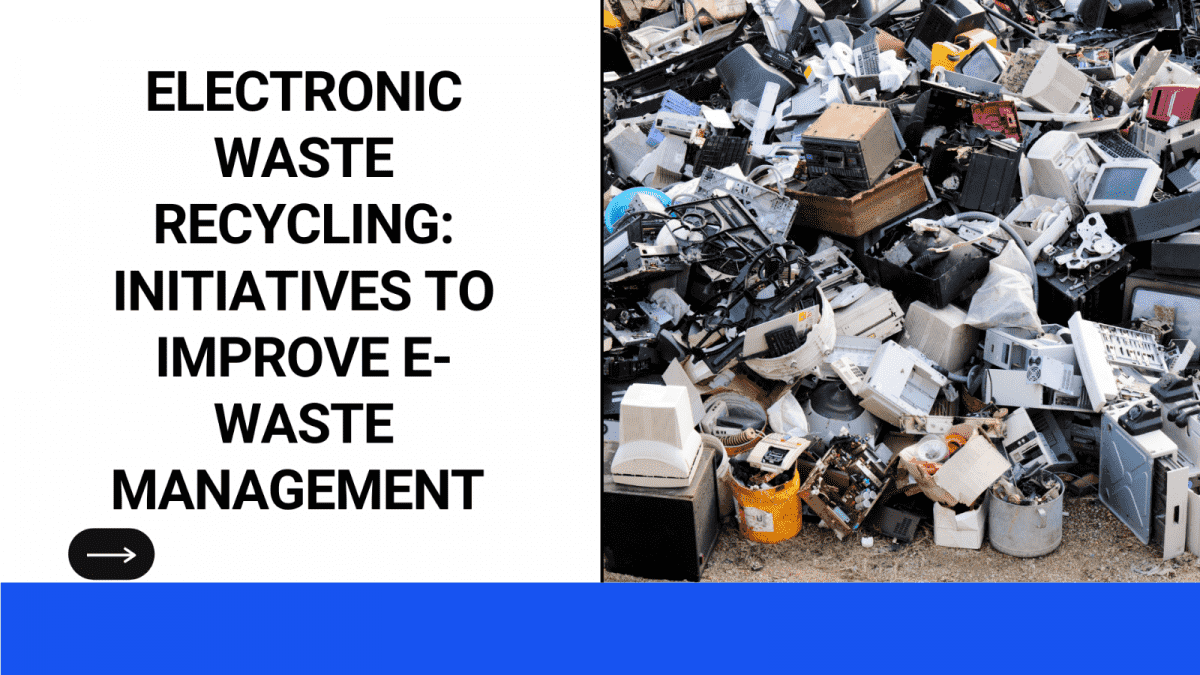Electronic Waste Recycling: Initiatives To Improve E-waste Management
- - Category: Business Opportunities
- - 03 May, 2021
- - Views: 820
- Save

Lets learn the E-waste Management Initiatives to improve the environment.
Electronic manufacturing firms saturate the market with new products every year. When newer or improved versions are released in the market, many electronic devices are discarded and repaired, including computers, printers, refrigerators, televisions, and smartphones. With the advancement in technology and the rise in consumer demand, the production of e-waste started to rise as well. But what happens to products after they reach their expiration date? Do you know, Electronic devices are dumped in landfills to a greater extent that causes the environment.
How much e-waste we are generating, and why should we be worried?
Consumers discard 44 million tonnes of electronics per year, according to a 2019 United Nations study titled "A New Circular Vision for Electronics, Time for a Global Reboot," and just 20% of that is recycled sustainably.
According to the Global E-Waste Monitor 2020, customers discarded 53.6 million tonnes of electronics in 2019, an increase of 20% over the previous five years.
India ranked third in the world in terms of e-waste production last year, behind China (10.1 million tonnes) and the United States (3.2 million tonnes) (6.9 million tonnes). According to an ASSOCHAM-EY joint report titled "Electronic Waste Management in India," based on current growth rates. Computer equipment and cell phones were also listed as the primary waste generators in India, according to the report. Consumption is only expected to rise, reaching over 100 million tonnes by 2050 if no action is taken.
Why should e-waste be recycled?
The aim of extracting metals and plastic from e-waste is to use them in the manufacture of new electronics. This isn't as easy as it seems. These metals are difficult to extract; according to a UN survey, total recovery rates for cobalt are only 30%. (despite technology existing that could recycle 95 percent). Recycled metals are two to ten times more energy-efficient than metals smelted from raw, and it's used in tablets, smartphones, and electric car batteries. Building successful reuse methods is the way forward for maintaining a sustainable production and recycling chain.
This is also important because the main components of most electronics, rare earth metals, are rarely hard to obtain. According to the most recent estimates, the global value of e-waste is about $62.5 billion per year, which is more than the GDP of most countries. It's also worth three times, Government should be concerned about E-waste recycling. If anyone wants to start an e-waste recycling business then you can contact the team corpseed for consultation.
Initiatives to improve e-waste management awareness
Since 2015, the Ministry of Electronics and Information Technology (MeitY) has collaborated with industry associations to launch an e-waste awareness campaign under Digital India to raise public awareness about the dangers of e-waste recycling in the unorganized sector and to educate them about alternative methods of e-waste disposal.
The program emphasizes the importance of e-waste recycling activities that are environmentally sustainable. The program has implemented the best e-waste recycling practices available worldwide, so that this sector can create employment and viable business opportunities for locals.
What laws govern the management of e-waste in India?
Since 2011, India has become the only country in Southern Asia with e-waste regulations, requiring that only approved dismantlers and recyclers collect e-waste. In total, the country now has 312 approved recyclers(data may be not sure).
The E-waste (Management) Rules, 2016 (in force since October 2016) established collection goals and delegated responsibility to producers – Extended Producer Responsibility (EPR). The brands responsible for ensuring that waste was brought back in. In 2018, these objectives were modified.
